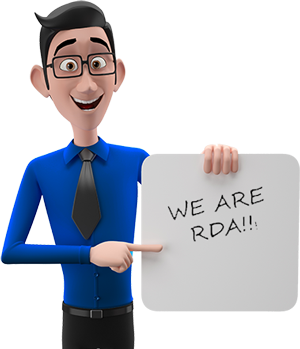Changing your HOA bylaws may seem daunting, but it’s often a necessary step to meet the evolving needs and values of the community. Understanding the governance process and taking key steps can make this transition smoother for residents. HOA bylaws are foundational documents governing community operations and differ from covenants and other regulations. Adhering to state laws and local legal requirements is essential for any valid amendments, making it crucial for members to recognize these distinctions when initiating changes.
This article offers a comprehensive guide to changing your HOA’s bylaws effectively, from forming committees to gaining approval through transparency and community involvement. By following these outlined steps, communities can create bylaws that serve the collective needs and ensure smooth governance adjustments.
Understand the Essential Elements of HOA Bylaws
Homeowners associations (HOAs) are guided by bylaws, which are key documents laying out the foundational governance and operational procedures of an association. These bylaws are the cornerstone for homeowner association management, encompassing all aspects of community life, from the way repairs are managed to detailed board elections procedures. Functioning within the bylaws, property owners of the community associations exercise their voting rights and participate in the decision-making process.
The essential elements of HOA bylaws include:
- Election Procedures: Detailed instructions on how board elections are conducted, defining eligible voting members and the frequency of elections.
- Board Resolutions: The proper procedures for board members to make decisions and pass resolutions.
- Maintenance Responsibilities: Clearly outlined responsibilities for both common areas and individual properties.
- Emergency Rule-Making: Conditions under which the board of directors can issue emergency rules, usually in response to imminent threats to public health or safety.
To amend HOA bylaws, the agreement of a majority of the entire membership is often required, ensuring any change reflects the collective will of the community. These legal documents can differ greatly across different associations but are universally binding for all members within a community.
Differentiate Between Bylaws, Covenants, and Regulations
When navigating the governance structures of homeowners associations (HOAs), it’s important to understand the hierarchy and purpose of various governing documents. At the top, we have federal and state laws that trump all HOA documents.
Directly beneath these are the Covenants, Conditions, and Restrictions (CC&Rs), also known as covenants. These are the binding agreements that set forth the essential rules property owners must abide by. All residents agree to these covenants before moving into the community.
The bylaws sit below the covenants and are focused on the internal workings of the HOA. They detail the management responsibilities and the roles of the board of directors, who are elected through board elections. These bylaws dictate proper procedures for running the HOA and can be amended to reflect changes in public health guidelines or other societal shifts.
Lastly, we have board rules and resolutions, which have the lowest authority. These may address more immediate concerns or clarify existing rules. In cases of imminent threats, an emergency rule may be instated by the current board for the safety of the entire membership.
It’s crucial to follow the proper channels and gain support from neighbors on board when considering amendments. This ensures that changes serve the interests of the community associations and comply with the foundational legal framework established in the Articles of Incorporation.
Recognize the Role of State Laws in HOA Governance
Recognize the Role of State Laws in HOA Governance
Homeowners associations (HOAs) are tightly regulated by state laws, which ensure they operate within legal boundaries. This legal foundation is pivotal for HOAs, particularly when it comes to amending bylaws and covenants. State legislation dictates the procedures that boards must follow, underscoring the necessity for legal counsel to navigate these changes effectively.
Compliance with state laws is a continuous obligation for homeowner associations. These laws can influence various aspects of HOA governance, from board elections and management to public health safeguards. Regularly reviewing and aligning HOA rules with the latest legislation helps safeguard the association and its members from legal conflicts.
Amendment of bylaws typically requires the consent of the entire membership, which reflects the democratic underpinning of community associations. On the other hand, changes to operating rules often demand only board resolutions, still within the bounds of state laws.
Elderly covenants may complicate amendment processes, sometimes necessitating signatures from property owners, which highlights the importance of thoroughly understanding state-specific regulations. Above all, government laws take precedence over any homeowner association document, warranting frequent reviews and updates to stay current and legal.
|
State Laws Impact on HOA Governance |
|---|
|
Legal Compliance: Must follow state regulations |
|
Amendment Procedures: Usually require member approval |
|
Governing Document Updates: To align with new laws |
|
Precedence: Government laws supersede HOA bylaws |
Assess the Need for Amending Your Bylaws
Assessing the need for amending bylaws within homeowners associations is crucial, as these serve as the foundational governance documents for the community. Regular evaluation of bylaws is essential since there is no set frequency for updates; this ensures they stay aligned with evolving societal norms, community needs, and legal mandates. A significant impetus for change may come from the homeowners themselves, manifesting through an overwhelming demand for specific adjustments, like amending quorum requirements for board elections or other meetings.
Bylaw amendments should not be taken lightly, as changes impact the entire membership of the homeowner association. It’s important that amendments originate from a genuine necessity rather than arbitrary preference, as the latter may cause discontent among property owners and unforeseen legal consequences. Efficient management companies will ensure that the amendment process is handled with proper procedures, engaging in comprehensive consultations with the community, seeking consensus, and promoting transparency.
Ultimately, bylaws adjustments should aim to better the quality of life within the community, striking a balance between public health, legal compliance, and homeowner needs. A carefully considered approach that involves getting neighbors on board and the current board passing the appropriate board resolutions can make for a harmonious transition to updated bylaws.
Form a Committee to Review Bylaws
Forming a committee to review and draft changes to the bylaws is a critical step in ensuring that the homeowners association (HOA) operates smoothly and aligns with the residents’ needs. Here are some key considerations when establishing such a committee:
- Incorporation of Residents’ Input: The committee’s main responsibilities include revising the HOA bylaws and creating an implementation plan that reflects the voices of the entire membership.
- Alignment of Values: It’s essential that the values and vision of the bylaw committee resonate with the association’s goals. This promotes effective governance and ensures that changes are representative of the community’s desires.
- Diversity: When selecting members for the bylaw committee, diversity should be a priority. A varied group brings multiple perspectives, catering to a broader range of property owners and helping to get more neighbors on board with proposed changes.
- Adhering to Legal and Governing Frameworks: The committee must undertake its work within the bounds of state laws and existing governing documents. Ignoring these can lead to legal conflicts and undermine the legitimacy of the process.
In conclusion, a well-assembled, goal-oriented bylaw committee is instrumental in navigating the intricacies of amending HOA bylaws, ensuring proper procedures are followed, and garnering widespread support from the community.
Table and lists were not included as they did not fit naturally within the specified word count and guidelines.
Draft Proposed Amendments Clearly
When considering changes to homeowners association bylaws, drafting proposed amendments is a critical step that requires attention to detail and legal accuracy. An attorney should be consulted to ensure the language of any amendments is not only clear and concise, but also adheres to existing laws and the overarching legal framework of the homeowner association.
To keep the entire membership informed and involved, the notice of proposed amendments should be circulated 10-30 days before the board meeting where they will be discussed. This notice must include the full text of the drafted rule change, its objectives, and the implications it may have on the community associations.
The process begins with identifying the precise sections of the bylaws that are outdated or ineffective, laying out a clear justification for each proposed modification. This necessitates a comprehensive review of the current bylaws to pinpoint those areas in need of improvement.
Ensuring that property owners are aware of any intended changes is vital. Transparency during this stage opens the door for member input and helps to get neighbors on board with the amendments, fostering a spirit of collaboration within the community.
Notify Homeowners About Proposed Changes
Changing the bylaws within homeowners associations (HOAs) is a significant process that requires homeowner awareness and participation. It is imperative for the HOA board to follow proper procedures, ensuring that every property owner is duly informed of any proposed amendments. State laws and individual HOA bylaws dictate the advance notice provided before any voting occurs.
When proposing changes, the HOA board must send homeowners a notice that includes:
- The complete text of the proposed bylaw changes.
- The explanation and justification for the changes.
- Information on the voting process, including how and when it will take place.
Transparency is key throughout the amendment process. Establishing open communication channels helps maintain the trust of the community and facilitates the participation of the entire membership during board elections and other decisions that could impact the community.
Should the proposed amendments be approved, the current board is accountable for distributing the revised bylaws to all property owners. This step is crucial to ensure that everyone has access to the updated governing documents and understands the community associations’ latest guidelines.
By meticulously adhering to these notification protocols, an HOA safeguards the rights of its members and operates in a manner that upholds the collective interest of the community.
Conduct Informational Meetings for Homeowner Input
Conducting Informational Meetings for Homeowner Input
Homeowners associations play a crucial role in managing community properties and maintaining standards. When it comes to amending HOA bylaws, homeowner involvement is paramount. To effectively garner this input, informational meetings should be scheduled. These forums not only allow property owners to express their views but also help to refine proposals with collective insights.
The Board of Directors has the responsibility to ensure these meetings are accessible to the entire membership, thus upholding transparency and promoting active participation in HOA governance. Open discussions during these meetings offer a deeper understanding of the community’s needs and expectations.
If there is no upcoming regularly scheduled board meeting, the current board may call a special meeting specifically for this purpose. A key element in this process is providing advance notice to the property owners, enabling optimal attendance and meaningful engagement.
The inclusion of homeowners’ feedback is crucial in amending bylaws to reflect the community’s values effectively. These meetings serve not just as a platform for information exchange but also as a tool for strengthening the community bond and establishing consensus on governance matters.
- Notification Requirements: Adequate notice for meetings
- Purpose of Meetings: Discuss bylaw amendments, gather feedback
- Importance: Ensures transparency, fosters community involvement
By following the proper procedures for informational meetings, homeowners associations can ensure that property owners are informed, engaged, and represented in the decision-making process.
Organize a Vote for Amendment Approval
Organizing a Vote for Amendment Approval in Homeowners Associations
To amend bylaws within homeowners associations (HOAs), it’s crucial to follow a structured voting process. This ensures adherence to management companies and community associations’ proper procedures, as well as compliance with state and the homeowner association’s regulations.
Firstly, the board of directors must agree on the proposed changes and schedule a discussion meeting. Prior to voting, all property owners must receive notification detailing the amendment text and voting instructions, a directive pegged on state laws and the association’s guidelines.
A formal voting session is then conducted, allowing each member to cast their vote. In states like California, secret ballots are a statutory requirement. Approval of amendments typically necessitates a majority vote, often set between two-thirds and three-quarters by the association’s bylaws.
During an open meeting, votes are tallied to ensure transparency—a gesture that instills confidence among members. The amendment becomes enforceable once the entire membership is notified of the change. Importantly, meeting the notification requirements is essential, particularly with amendments affecting covenants.
Vote Organization Checklist:
- Agree on proposed amendments
- Notify members of the upcoming vote
- Schedule and conduct the voting session
- Tally votes in an open meeting
- Announce the results and notify of the bylaw changes
By meticulously adhering to these steps, boards facilitate a clear and legitimate process that respects members’ rights and promotes harmony within the community.
Achieve Majority Approval for Changes
When homeowners in a community managed by a homeowner association seek to change the bylaws, a structured process must be followed to ensure the proposed amendments are given due consideration and the proper procedures adhered to. This process ensures that the rights of all property owners within the association are respected.
First, a majority vote of the homeowners is required to alter the bylaws, and the exact percentage needed for approval should be outlined in the HOA’s governing documents. The entire membership must be notified well in advance of the proposed bylaw changes. This notification typically comes in the form of a detailed notice or letter, which clearly states the suggested amendments and sets a definitive date for the voting process.
Subsequently, a formal discussion meeting takes place to deliberate on the proposal, offering a platform for association members to voice concerns or support. Following the discussion, a transparent voting session allows the entire membership to cast their vote.
To ensure absolute transparency, votes are to be counted and results shared in an open meeting. If the amendment succeeds in obtaining the necessary majority approval, the last step is to officially record the change with the county office, as this step is essential for the amendments to become legally binding and acknowledged as the newest iteration of the association’s bylaws.
Address Common Challenges in Bylaw Amendments
When considering amendments to HOA bylaws, it’s essential to address common challenges that may arise during the process. Thorough preparation and community involvement are key to a smooth amendment procedure. Below are some common challenges and solutions:
Engaging the Community: Engaging property owners and gaining their support is crucial. To facilitate involvement:
- Schedule special meetings to discuss the proposed changes.
- Allow ample time for questions and provide detailed explanations.
Documentation and Procedures: Amending bylaws requires meticulous documentation. Ensure:
- All proposed changes are clearly documented.
- The submission to the board follows proper procedures.
Legal Timelines: Be aware of the statute of limitations. Any challenges to the amendments must be made within:
- Four years from the amendment date.
Effective Communication: Operate transparently and efficiently by:
- Notifying the entire membership promptly upon the amendment’s acceptance.
Purpose and Clarity: Ensure amendments serve the community’s best interests by:
- Addressing new state laws or previous ambiguities.
- Aiming to resolve potential conflicts among neighbors.
In conclusion, open dialogue, strict adherence to guidelines, and clear objectives are essential for successful bylaw amendment initiatives in homeowners associations.
Ensure Legal Compliance Throughout the Process
Ensuring legal compliance during the process of changing your homeowners association (HOA) bylaws is of paramount importance for the board of directors. To properly navigate this process, HOA boards must first draft proposed changes while adhering to state laws and the association’s governing documents. Such precision will prevent conflicts and guarantee adherence to proper procedures.
Engaging legal counsel when amending bylaws and Covenants, Conditions, & Restrictions (CC&Rs) is crucial. A qualified attorney’s expertise assures that the proposed amendments align with applicable laws and regulatory standards, thus avoiding legal pitfalls.
Moreover, HOA boards are advised to undertake bylaw changes with a justifiable reason—be it for the general welfare of the community, public health concerns, or to address an imminent threat. This mitigates possible legal issues and emphasizes the board’s responsibility towards the community.
Regular review of covenants, even those expired, maintains legal compliance and informs members about their obligations and entitlements. Board resolutions must reflect a thorough understanding of the community’s needs and legal requirements.
In essence, proper engagement with legal professionals and a clear rationale for amendments are fundamental steps in changing your HOA bylaws with full legal compliance.
Understand Procedures for Emergency Rule Changes
Understanding the procedures for emergency rule changes within homeowners associations (HOAs) is critical for both board members and property owners. In situations where there is an imminent threat to public health and safety or the risk of substantial economic loss, the HOA board can adopt emergency rules immediately, bypassing the normal procedures.
Key Points about Emergency Rule Changes in HOAs
- Immediate Implementation: An emergency rule can be enacted without prior notice to the members to address urgent risks.
- Post-Change Notification: Although advance notice isn’t necessary, the HOA must inform members following the implementation, explaining the change, its purpose, and its impact.
- Temporary Nature: Such rule changes are designed to be temporary, generally lasting no more than 120 days, to manage immediate threats effectively.
- State Laws: Boards must be aware of state-specific regulations, like those in California, which define the framework for making emergency rule changes.
Understanding these criteria ensures that the current board of directors can make informed decisions when the safety and economic well-being of the community are at stake.
Emphasize the Importance of Community Input
The importance of community input when changing homeowners associations’ bylaws cannot be overstated. Effective modifications start with gathering feedback, a step that not only provides the board of directors with diverse perspectives but also cements a collaborative spirit within the property owners. In adherence to proper procedures, allowing sufficient time for the entire membership to review and ponder over proposed changes ensures compliance with the often mandatory review periods set out by the association’s governing documents.
Moreover, integrating feedback from community members into the amendment process can significantly bolster the support for the changes. While this might necessitate arranging extra meetings, the active engagement of homeowners in discussions is vital for securing backing from the community. This approach ensures that, during board elections, members feel their opinions have been considered in shaping their living environment.
Clear, transparent communication is another pillar crucial to the process. It guarantees that the concerns of association members are properly heard and addressed, thus maintaining public health and the community’s well-being. By keeping neighbors on board with transparent measures, management companies, and current board members can foster greater cooperation and trust throughout the community.
Maintain Transparency During the Amendment Process
Maintaining transparency during the amendment process of homeowners association bylaws is vital to building and preserving trust between the board of directors and property owners within the community. Here are key practices to ensure an open and fair process:
- Open Voting: Votes on bylaw amendments should be counted during an open meeting, allowing members to witness proceedings first-hand.
- Provision for Opinions: Homeowners should have the opportunity to express their views and queries at the meeting where the amendment proposal is deliberated, promoting constructive dialogue.
- Timely Notifications: The board has a responsibility to inform all community members of an approved amendment proposal by sending notifications within fifteen days post-approval.
- Informative Notice: Prior to voting on the amendment, notification must be circulated that includes a comprehensive description of the proposed amendment and the rationale behind it.
- Community Input: Encouraging participation through board meeting attendance or petition signing is imperative. It highlights the board’s dedication to transparency and shared governance, getting neighbors on board with any changes.
By adhering to these procedures, the board can ensure the amendment process is conducted with clarity and the entire membership is well-informed, fostering a sense of involvement and cohesiveness within the community associations.
Regularly Update Governing Documents to Reflect Changes
Regularly updating HOA governing documents is a critical practice for homeowners associations, with experts recommending a review every 3 to 5 years. This ensures that the bylaws stay up-to-date with the evolving needs of the community, along with compliance with current state laws. Changes in technology, legal requirements, or simply the need to clarify ambiguous rules are common reasons for amendments.
Involving legal counsel in the review process is a key step to verify that any modifications abide by both the prevailing laws and the community’s existing governing framework. This helps to uphold the legal integrity of the association’s bylaws.
Homeowner association members often have inputs and demands, such as changing meeting quorum requirements. Factoring in these considerations during the amendment process is essential for maintaining a harmonious community environment.
For changes to be officially recognized, it is crucial to follow proper procedures, which include giving adequate notice to the entire membership about proposed amendments. This transparency ensures that property owners are well-informed about the changes that govern their community associations. Once notified, these changes become effective, reflecting the collective agreement and the association’s commitment to the well-being of the community.
Related Articles:
- HOA CC&Rs Explained: Navigating Homeowners Association Bylaws
“Navigate HOA bylaws with ease.” - Fiduciary Duty for HOA Board Members
“Learn about the fiduciary duties of HOA board members.” - HOA Code of Conduct: Legal Implications for Board Members
“Understand the legal implications of the HOA code of conduct.”








